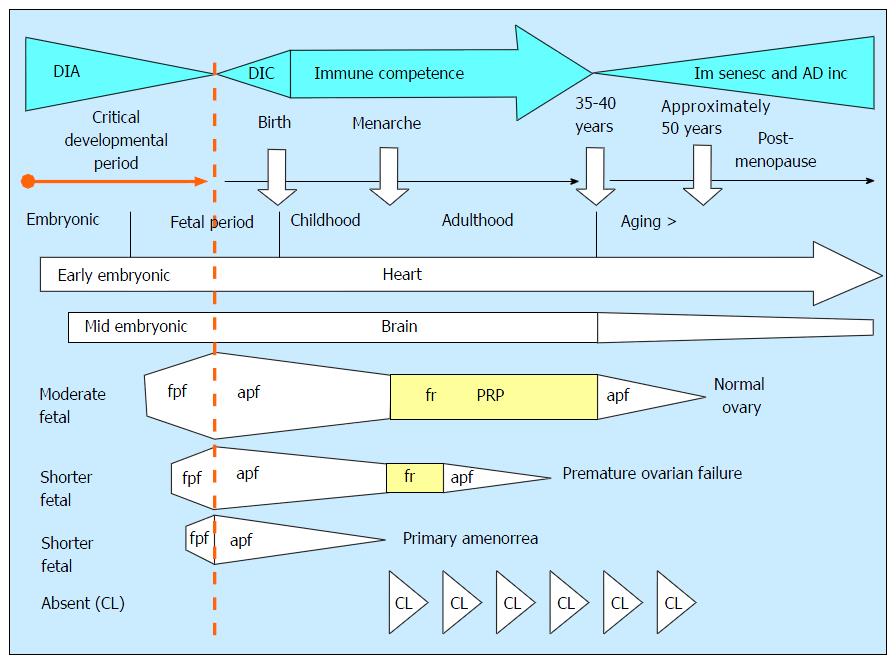Copyright
©The Author(s) 2016.
World J Stem Cells. Dec 26, 2016; 8(12): 399-427
Published online Dec 26, 2016. doi: 10.4252/wjsc.v8.i12.399
Published online Dec 26, 2016. doi: 10.4252/wjsc.v8.i12.399
Figure 6 Developmental immune adaptation and the longevity of the tissue control system “stop effect”.
The functional persistence of various body tissues depends on their proper support by the TCS. The immune components of TCS underwent during an organism development the developmental immune adaptation (DIA), developing immune competence (DIC), mature immune competence (immune competence), and immune senescence and aging diseases incidence (Im senesc and AD inc). The DIA represents a critical developmental period for the preservation of tissue function during the postnatal lifetime. The heart differentiates and functions from early stages of embryonic period (early embryonic) and it can function throughout the life. The brain begins to differentiate a little bit later (mid embryonic), and its function can be deteriorated earlier compared to that of the heart. The fetal ovarian primary follicles (fpf) begin to differentiate during the fetal period (moderate fetal), aging fetal follicles are depleted till menarche, after which they are replaced by the cyclic follicular renewal (fr). Normal function of the ovary lasts from menarche till 35-40 years. Aging primary follicles with altered oocytes are gradually depleted till menopause. The premature ovarian failure (POF) results from shorter development of the ovary during DIA (shorter fetal), and short DIA of ovarian development causes primary amenorrea. The prenatal lack of corpora lutea causes their cyclic rejection[1]. TCS: Tissue control system; CL: Corpus luteum; PRP: Prime reproductive period.
- Citation: Bukovsky A. Involvement of blood mononuclear cells in the infertility, age-associated diseases and cancer treatment. World J Stem Cells 2016; 8(12): 399-427
- URL: https://www.wjgnet.com/1948-0210/full/v8/i12/399.htm
- DOI: https://dx.doi.org/10.4252/wjsc.v8.i12.399









